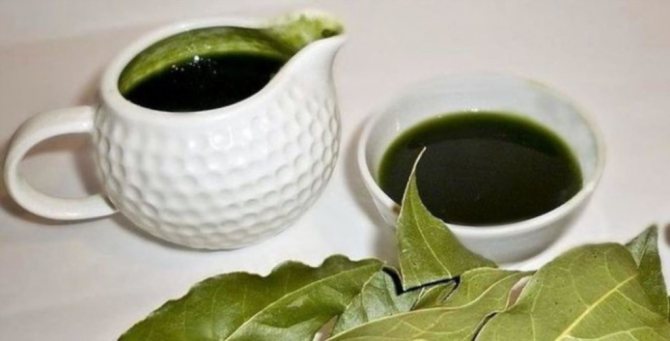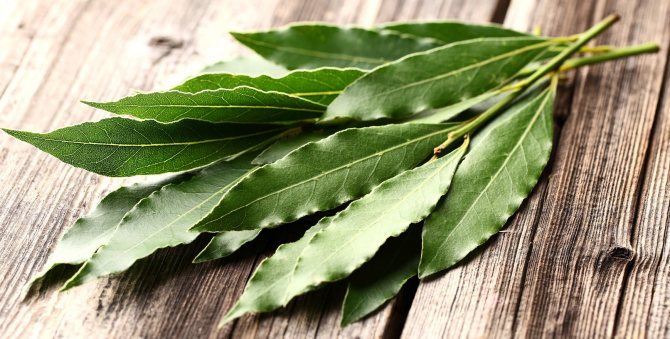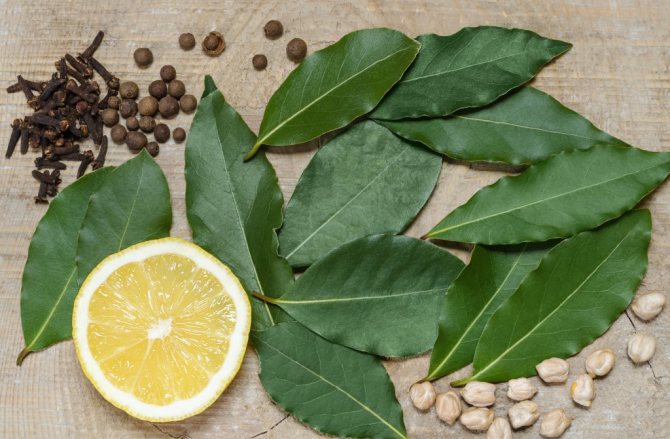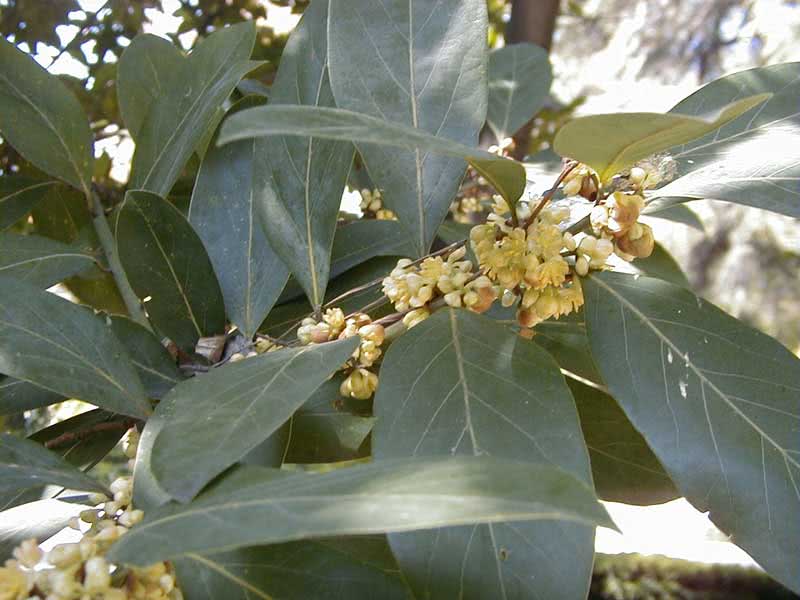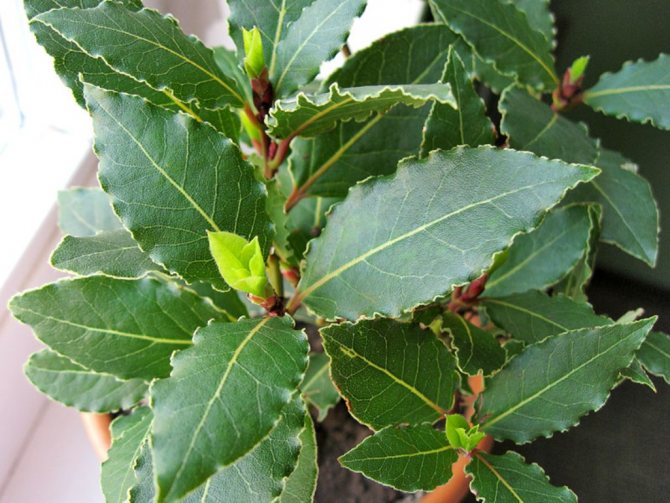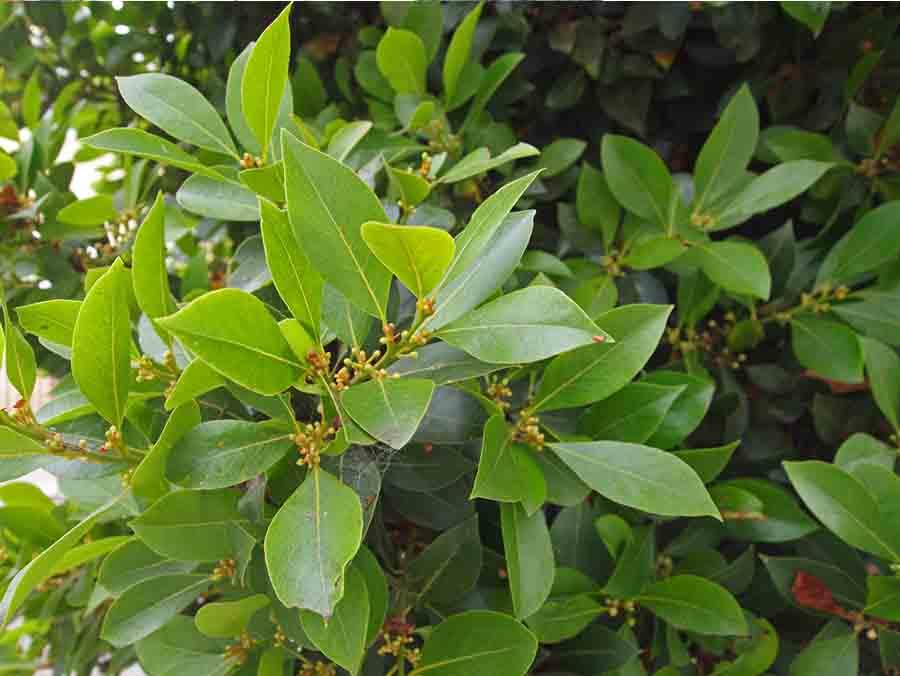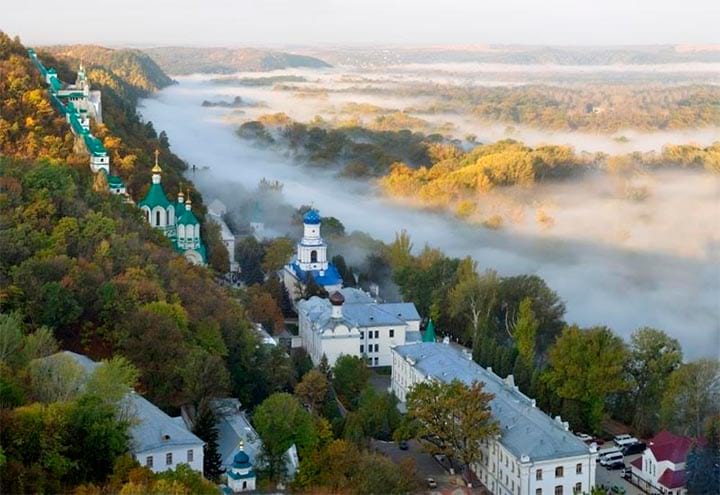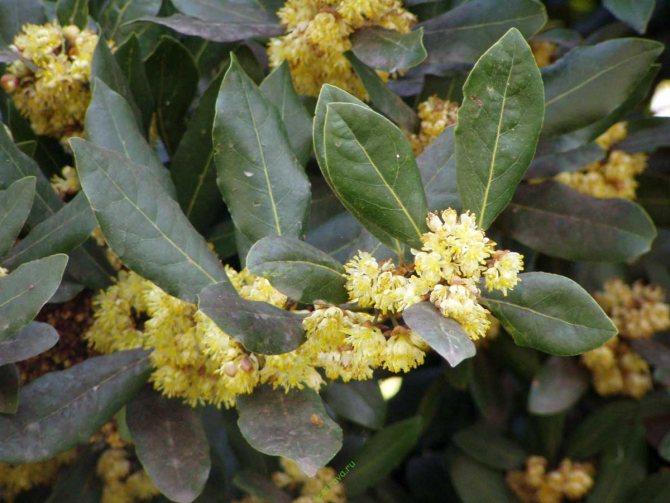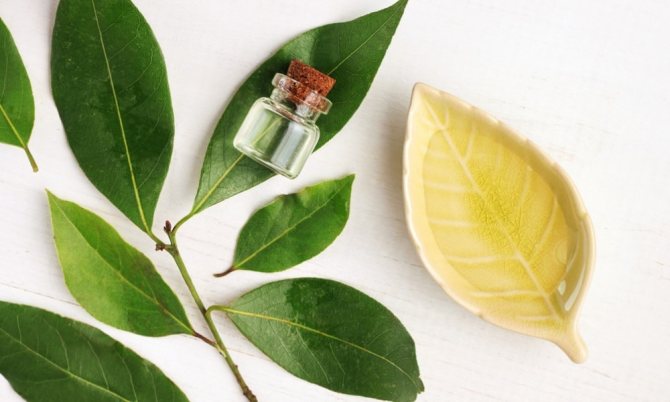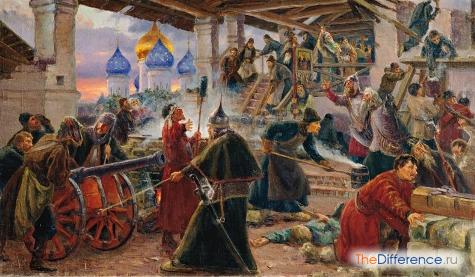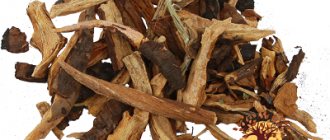Of course, there is no home where bay leaves are not used in nutrition, at least I have not met this in all my years. Its specific and spicy aroma gives any dish an amazing taste, for which everyone loves it: from hostesses to cooks all over the world.
What is a bay leaf, from which tree or shrub? These are the leaves of an evergreen tree called Laurel noble, when I went to the southern coast of the Black Sea, I saw it with my own eyes. He lives from 100 to 400 years. During this period, of course, a lot of things have been accumulated in his leaflets.
But there are myths and legends that this spice can heal. Of course, you can believe it or not, but you must first get acquainted with its composition. And the composition great, despite the fact that all parts of the tree (shrub) are very valuable, because they contain aromatic resins, tannins, bitterness, many minerals and vitamins. Oil is squeezed out of the leaves, which is valued above all, because it contains 24 valuable components. To use this sheet for treatment (for food too), you need to know shelf life... Look carefully on the packaging for the expiration date, usually one year.
If the expiration date has passed, it is better to throw it away, as you can harm yourself, because over time, the leaf releases harmful substances. It is best to store the sheet in a tightly closed glass jar.
There is a tree with similar leaves, but they are very poisonous. If at least one leaf falls on the plate, it will be a tragedy. Therefore, beware of buying lavrushka from traders in the market, on the roads.
Bay leaf in the kitchen
How to use laurel leaf correctly
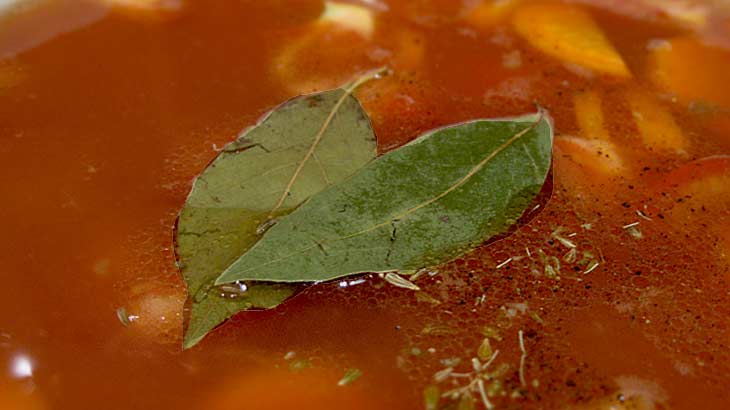
- put in thick soup 10 minutes before cooking, remove 3-4 minutes after turning off the stove;
- add to liquid soup 5 minutes before cooking and remove immediately after turning off the stove;
- add to fish broth 5 minutes before cooking and remove after 2-4 minutes;
- add to the broth 15-20 minutes before cooking, remove immediately after turning off;
- in fried, baked dishes, it is best to use a spice mixture that contains lavrushka;
- put in meat stews as soon as they boil and remove after turning off the stove;
- lavrushka is placed in all marinades, pickles and pickles, as it acts as an antiseptic, provides a pleasant smell, and prevents the development of harmful bacteria;
Do not use if:
- the expiration date has passed;
- on the leaves black, brown, "gray" spots;
- chicken or turkey in a dish;
- vegetable broth;
- fish broth, if the fish is bitter;
Useful properties of bay leaves
- bay leaf heals the kidneys, treats cystitis, helps with cholelithiasis;
- if you add bay leaves every day when cooking, this will help normalize the digestive tract;
- if you have insomnia, place a few pieces of paper under your pillow;
- if there is a smell from the mouth, chew the leaf;
- if there are a lot of insects or an unpleasant smell in the room, you can fumigate with bay leaves;
- laurel is a natural antibiotic and antiseptic;
- everyone knows that bay leaves induce appetite and aid digestion;
- rinse the head with an infusion of bay leaves, it helps to heal wounds on the head, to eliminate dandruff;
- it is useful to rinse your mouth with a decoction of bay leaf for toothache, stomatitis, and gum disease;
- from time immemorial, bay leaves were used to treat colds, runny nose;
- if your head hurts, you can attach the steamed leaves to your temples;
- if you hurt your knee, apply a steamed bay leaf;
Be wary of using bay leaves not only for treatment, but also in food if you have:
- low pressure;
- you are pregnant or nursing;
- you are allergic;
- there are internal ulcers;
- exacerbation of any disease (gastritis, kidney, heart, gastrointestinal tract);
- a blood clotting disorder;
- a disease leading to bleeding;
Types of laurel tree
Laurel Azores or Canary / Laurus azorica
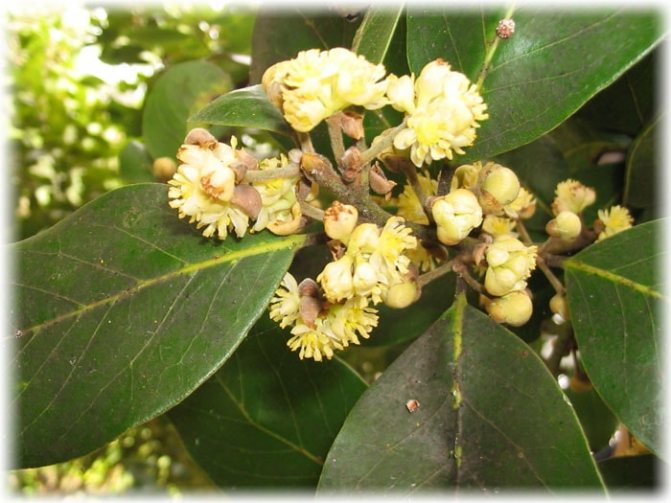

Height reaches 15 m, with pubescent shoots. Habitat, Azores and Canary Islands.
Leaves are dark green oval in shape, up to 15 and 6-8 cm long.
It blooms in yellow, umbrella-shaped, which grow from the axils of the leaves in small groups. Blooms in late spring, closer to summer.
Laurel / Laurus nobilis
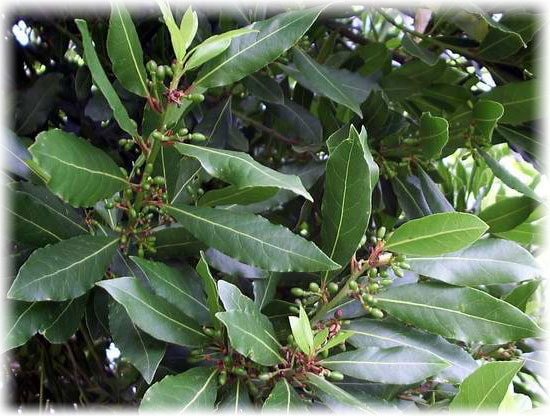

The height is up to 6 m. The leaves reach a length of 20 and a width of 8 cm. Pleasant leather velvet to the touch, pointed at the end. Leaves grow on short cuttings. It blooms in yellow in umbellate inflorescences from the axils of the leaves, 2 pcs. Flowering begins in late spring.
Recipes for use in traditional medicine
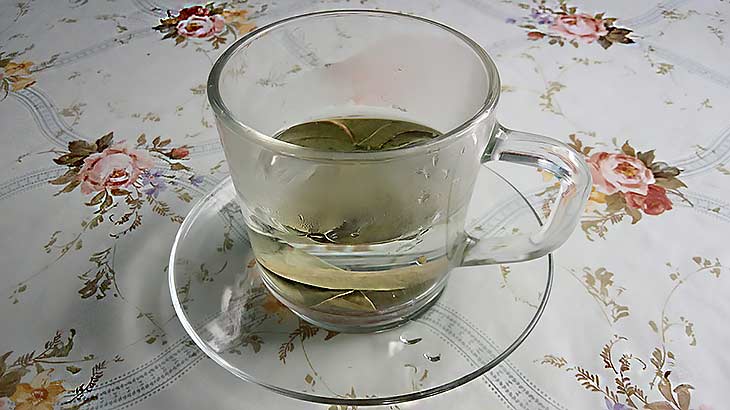

If you feel that the nasopharynx is beginning to hurt, then it is enough to breathe in the essential oils of bay leaf and you can stop a runny nose at the root.
For joint pain, gout, you need to take 10 larger leaves, brew a liter of boiling water in a thermos overnight and take 1/3 cup between meals for 10 days.
To clear the air of bacteria and viruses, it is enough to brew 5-6 leaves in boiling water, insist and put in the room for half an hour or an hour.
If you have a fungus on your feet, do baths with a decoction of lavrushka, every other day, 2 weeks, you can repeat it after half a month, until it is completely cured.
If you have seats. where salt deposits are felt, make a decoction of 10 leaves and half a liter of water. Boil the broth for no more than five minutes, let it brew for 6 hours and take a sip during the day for no more than three days. You can repeat it in a week. This broth promotes intensive dissolution of salts.
To raise immunity, take 5 g (15 pcs) of lavrushka and 300 ml of water, bring to a boil, cook for 5 minutes and pour into a thermos, leave for 4 hours, strain and drink this infusion 1 tablespoon during the day. The course of treatment is three days, after two weeks you can repeat it.
An infusion of bay leaves in vegetable oil perfectly heals bruises, sprains and fractures. 5 tbsp. Pour tablespoons of chopped leaves with a glass of vegetable oil, simmer under a lid for one hour and strain. rub the injured area. Also, this oil can be used for bedsores and sinusitis.
For headaches, paralysis, rheumatism, alcohol tincture is used. Pour 300g of vodka and one tablespoon of chopped laurel leaves into a container, leave for a week in a dark place. Take 15-20 drops once a day 20 minutes before meals.
With skin rashes, bathing with laurel infusion helps. For a bath of water - 1 liter of tincture. It is recommended to take a bath no longer than 15-20 minutes.
If you have an upset stomach or gas, you can take a decoction. To do this, take 5 grams of lavrushka and a glass of water (you can add honey and ginger to taste), boil for 5 minutes, let it brew for half an hour or an hour.
As you can see, lavrushechka is suitable not only as a seasoning, but also helps to be healthy.
Remember, everything needs a measure. If in small doses it is a medicine, in large doses it is poison!
- This applies to all spices, herbs, leaves and plants! These are gifts of nature and should be treated with care!
About the concepts of laurel and stavropegia
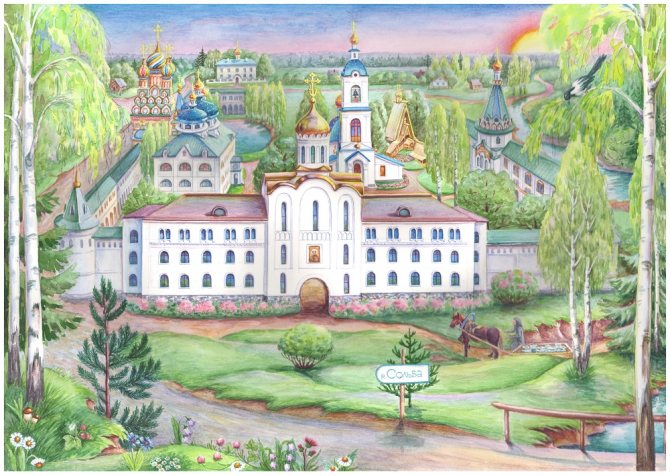

About the concept of laurel
Since ancient times, some monasteries of the Eastern Christian Church have had a special ecclesiastical legal status.With the adoption of Christianity by Russia, it adopted many of the features of Eastern canon law, including the assignment of the status of lavra and stavropegia to individual monasteries.
For a better understanding of these concepts, it is necessary to pay attention, firstly, to their origin, secondly, to the history of these institutions, and thirdly, to their modern features.
The ancient Ionic (ancient Greek) word "laurel" (Λαύρα) had many meanings and their shades. It could mean a street, a passage, a village [1]; a certain part of the city, populated area [2]; could be translated as an adjective as “wide”, “crowded” [3], etc. The further evolution of this concept gradually makes it inextricably linked with the existence of the Christian Church. Initially, “the streets in Alexandria were called lavroi, where a church was built” [4]. The question of in which of the countries of the East this concept became directly associated with the monastic community remains open. According to one version, this connection arose soon after the birth of monasticism simultaneously in Egypt and Palestine: “monastic settlements can be called laurels near the place of the exploits of Anthony in Egypt and Hilarion in Palestine ”[5].
According to another version, this name, in relation to monastic communities, first appeared in Palestine, where monks were forced to gather in as many numbers as possible and fence their homes with walls, for fear of attacks from the Bedouin nomads. So the laurel was called back in the 6th century. monastery of st. Theodosius the Great (died 529) near Jerusalem ”[6].
The historian of the Russian Church, an expert in the field of monastic life and the future Bishop Ambrose (Ornatsky) (1778-1827) wrote at the beginning of the 19th century: - some churches. In this likeness, a whole settlement or a street of monastic cells, according to the desert rule separately, and not living together, under one abbot, however, and only on holidays converging into a common church, was called a laurel. ... After that, large and extensive monasteries began to be called laurels, which there were the Lavra of St. Euphemia, St. Gerasimus at Jordan, St. Chariton and Kiriyak, and St. Sava in Jerusalem. In Mount Athos inhabited by many monasteries, almost every monastery is called lavroe by monks ”[7].
Indeed, "in the flourishing period of monasticism in the 4th - 6th centuries." in the East, there are many monasteries called laurels. In addition to those listed above, the most famous of them include the New Lavra and the Lavra of St. John Hosevit [8]. In total, St. Sawa (439-532) in Palestine founded seven laurels [9]. The Lavra of St. Sava the Sanctified near Jerusalem is glorified by the presence of St. John Damascene; the most ancient Lavra of St. Afanasy [10].
The concept of the laurel became known in Russia shortly after the adoption of Christianity, and already the Grand Duke Andrey Bogolyubsky in 1159 granted this status to the Kiev Caves Monastery and “ordered to be under the direct supervision of his own and the Patriarch of Constantinople, and calling it laurel and stavropegia, following the example those in the Eastern Greek Churches ”[11].
However, it should be noted that until the 18th century there were no clear criteria and normative procedures for assigning the name of a monastery to a monastery, therefore, for various reasons, a large number of Russian monasteries could be called this way. “In Russia, many monasteries, when they were famous before the other predominant number of their brethren, appropriated the name laurels for themselves, and were named with this title even in the letters. This name was given in the 17th century to the monasteries of Miracles, Savvino-Storozhevsky, Anthony the Roman, Kirillo-Belozersky, Glushitsky and others.But since the 18th century in the Russian Church this title has become a hierarchical advantage of only three primary monasteries, Kiev-Pechersky, Trinity-Sergiev and Alexander Nevsky ”[12]. In 1831 the Pochaev Monastery acquired the status of a lavra. Thus, there were four laurels in pre-revolutionary Russia.
An unambiguous answer to the question of what characteristic features of this or that monastery make it possible to assign it the name of the lavra did not appear even after the changes that took place in the church life of the 18th century. In most sources, a large number of temples and monastery inhabitants are named as one of the main conditions [13]. However, not all large monasteries were called laurels. Other frequently cited conditions are the wealth of the monastery, [14] as well as its importance [15]; some authors call the lavras "the most notable monasteries" [16]. But, despite this, the existing laurels did not always meet the criteria listed above. For example, along with the ancients who played a huge role in the spiritual, cultural and secular history: Russia of the Kiev-Pechersk and Trinity-Sergius Lavras, there were comparatively "young" and incomparably less famous. So, the establishment of the Alexander Nevsky Lavra dates back to 1797, and the Pochaev Lavra - only to 1833. Moreover, these laurels owe their appearance to the political will of the emperors: in the first case - Paul I [17], in the second - Nicholas I [18].
Administratively, the Lavras in the pre-synodal era were subordinate to the Patriarch of Constantinople, then to the metropolitans, and later to the Patriarchs of All Russia; in the synodal era - to the Holy Synod; after the restoration of the patriarchate - again to the Patriarch of Moscow and All Russia. [19].
In fact, the name: laurel is just an honorary title (usually a stavropegic monastery).
In the entire history of monasticism, not a single nunnery has received the status of a lavra. From this, however, it does not follow that such a precedent is impossible in the future. Since their inception (almost simultaneously with the emergence of monasticism) women's monasteries have not been in a humiliated position in relation to men's. On the contrary, in the first centuries of the existence of monasticism, the founders of the most ancient men's monasteries actively contributed to the growth of the number of women's monasteries. Thus, the first convent was founded by Saint Pachomius for his sister Mary, and Blessed Jerome later translated the expanded rules of Saint Pachomius for the founder of the convent on the Mount of Olives, the Roman Paul (+ 404) [20].
The Monk Seraphim of Sarov, in his prediction about the future of the Diveyevo monastery, spoke about the acquisition of the status of a lavra by the female abode: “There have never been examples of female Lavras, but I, poor Seraphim, will have a Lavra in Diveyevo. The Lavra will be all around, that is, behind the groove, in the monastery of Mother Alexandra ... widows, wives, and girls can live in her monastery, and the cinematography will only be in the groove ... only girls will be in my monastery ”[21]
Thus, the fact of the absence of female laurels in the past cannot exclude the appearance of such in the future. The main informal limitation to this may be the absence of tradition or precedent in the centuries-old history of the Church. There are no formal (dogmatic, ecclesiological, historical, etc.) prohibitions or restrictions for this.
About the concept of stavropegia
The Greek term "stavropegia" consists of the word σταυρος, which translates as "cross" and the word πήγνυμι or πηγνὺω, meaning "I affirm", "I drive in" [22]. Thus, the literal translation of this concept can be pronounced as "cross-winding".
This word indicates an ancient symbolic action that influenced the subsequent canonical status of the monastery where it was carried out.“Stavropegia, that is, the baptism of the cross, originally meant a personal action and the right of a diocesan bishop to plant a cross on the foundation of every church and monastery in his diocese. This right to the bishops belonged to the power of the 4th rule of the Fourth Ecumenical Council of Chalcedon and the 131st commandment of Justinian. But some builders of churches and monasteries, in order to distinguish them from others by their advantage, began to ask the Patriarchs for the right to be this directly under their own authority, and not under diocesan bishops. Why, as a sign of this exceptional advantage, the Patriarchs either themselves personally erected a cross on the foundation of the temple, or with a prayer, blessing it, they sent it through others. Since then, the monastery with all the brethren and subordinates, or the church with its clergy and parish, were excluded from the jurisdiction of their local bishop and were simply called stavropegia or patriarch stavropegia. All spiritual matters before that monastery, or before that arrival, were in charge of the Patriarch himself, or his exarch, or the patrolman ”[23].
The cross, erected when conferring stauropegic status to the monastery, is erected “behind the holy meal (throne) and is sometimes decorated with stones and gold” [24].
According to ancient tradition, the stauropegic law in all dioceses of his region could be used by every Patriarch, and the stauropegic law of the Patriarch of Constantinople spread throughout the East, including outside its region [25].
The institute of stavropegia came to Russia either simultaneously with the adoption of Christianity, or shortly thereafter. Moreover, both in the East and in Russia, in addition to stavropegium, there was another form of independence of monasteries from diocesan bishops. Canon law specialist Professor V.G. Singers wrote: “Even in the Greek Church, it became a custom that some monasteries were taken under the jurisdiction of the Patriarchs and became dependent only on them, and not on diocesan bishops (made stauropegic). This custom also spread to Russia. But in our country in the old days, besides the fact that other monasteries were subject only to the highest ecclesiastical authority (or the Greek Patriarchs, or the All-Russian metropolitans and Patriarchs), very many of them were under the auspices of kings and princes, from whom they received unjudged letters that liberated these monasteries. from the court and jurisdiction of the local bishop. In such princely and royal monasteries, all management of monastic affairs (except for purely spiritual matters) and the appointment of authorities were subject to the conduct of their patrons. Despite the fact that Russian councils issued decrees against such alienation of monasteries from the diocesan authority, disagreeing with the canons, this continued to exist until the time of church reforms at the beginning of the 18th century, when all monasteries were subordinate to diocesan administrations ”[26].
However, the question of whether the church leader, a secular person, could intervene in the spiritual management of the monastery, depended mainly on the personal qualities of a particular patron. Professor E.E. Golubinsky notes that the intervention of kings, princes and nobility in this area of management of monasteries was not uncommon [27].
As for the stavropegic monasteries proper, they, in addition to a special church-legal status, also had some special rights and privileges, mainly, consisted in liturgical features [28].
In total, in 1914 there were 1,025 monasteries in Russia. There were about the same number of women's monasteries as there were men's monasteries, but the number of women nuns outnumbered nuns by 3.5 times. [29] At the same time, there were only four first-class women's monasteries. There were no stavropegic convents according to the states of the Holy Synod [30].
At present, 655 monasteries have been opened and operate on the canonical territory of the Russian Orthodox Church, of which there are 321 for men and 334 for women. The number of monasteries and hermitages exceeds 200.In the direct jurisdiction of the Most Holy Patriarch of Moscow and All Russia, there are 25 stauropegic monasteries [31].
Today in Russia and female stavripigial monasteries are not isolated. For example, such monasteries as Zachatyevsky in Moscow, Pokrovsky at the Pokrovskaya outpost in Moscow, Ioannovsky in St. Petersburg, Pyukhtitsky in honor of the Assumption of the Most Holy Theotokos, the Nativity of the Mother of God monastery in Moscow, Kazan Amvrosievskaya hermitage [32] are stavropegic monasteries.
According to the current Statute of the Russian Orthodox Church, adopted at the Jubilee Council of Bishops in 2000, the following procedure is provided for the proclamation of stavropegia and the management of stauropegic monasteries:
"3. Stavropegic monasteries are proclaimed by the decision of the Patriarch of Moscow and All Russia and the Holy Synod in compliance with the canonical procedure.
4. Stavropegial monasteries are under the commanding supervision and canonical administration of the Patriarch of Moscow and All Russia or those Synodal institutions to which the Patriarch of Moscow and All Russia will bless such supervision and management ”[33].
After the restoration of the patriarchate in 1918, again, as in the pre-synodal period, “in the stauropegic monasteries the name of not the local bishop, but the Patriarch is ascended. The patriarch, who manages such a monastery through his governors, has the right to supervise the administration and life of the monastery, the right to administer the court in the affairs of the brethren ”[34].
His Holiness the Patriarch “appoints his governors to the male stauropegic monasteries. Women's stauropegic monasteries have their abbess, but at the same time they are under the jurisdiction of the Patriarch as the ruling bishop, even if they are located on the territory of other dioceses ”[35].
The patriarchal governor in stavropegic monasteries is usually an archimandrite. In Russia, there is no analogue of such a name for the abbess of women's stauropegic monasteries, they are called abbesses. However, in the Orthodox East, there is also a characteristic name, "αρχιμανδριτις" (archimandritis = archimandris) [36].
There are no prohibitions or restrictions (dogmatic, ecclesiological, historical, etc.) for the establishment of stavropegia in a nunnery, and this is confirmed by modern church practice.
[1] Christianity. Encyclopedic Dictionary. Chief editor - S.S. Averintsev. T. 2.M., 1995.S. 6.
[2] Encyclopedic Dictionary. T. 33. Reprint reproduction of Brockhaus F.A. - Efron I.A. Terra, 1991, p. 211.

